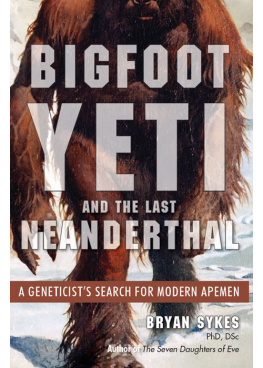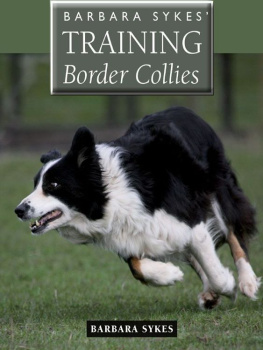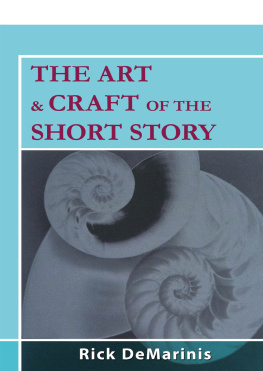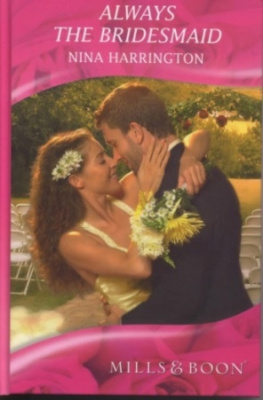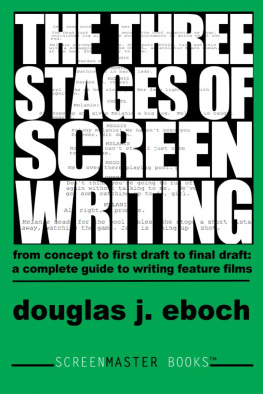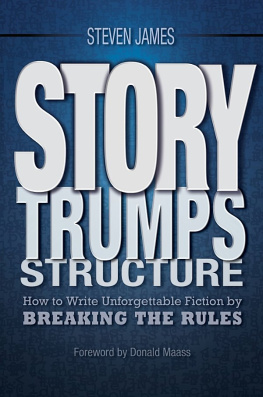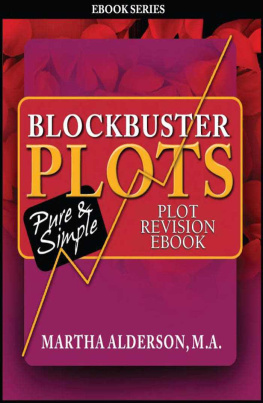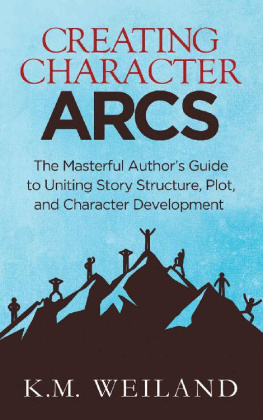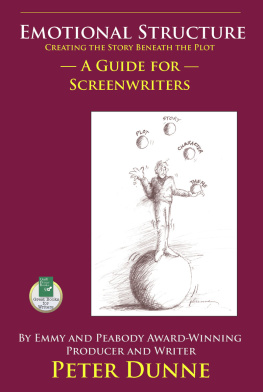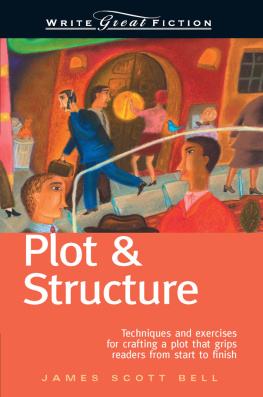How to Craft a Great Story
Creating perfect plot and structure
Chris Sykes
Contents
About the author
Early in his career Chris Sykes gained a B.Ed. and an MA in Philosophy of Education from the University of London and subsequently made a living as a writer and teacher, working extensively in higher education. Over the past 30 years he has written many poems which have been published in the UK and USA. He has had three stage plays produced and worked extensively on radio as a writer and, for a brief while, as a sports commentator. He has taught creative writing in major UK Universities such as Warwick, Oxford, City University London and the University of Sussex, as well as a variety of starting to write courses at the City Literary Institute, London.
He is the author of Your Evening Class: Creative Writing and The Writers Source Book (both Hodder & Stoughton). He is well versed in helping people get started, develop the necessary skills to tell a story, create believable characters and develop narrative and has had many pupils go on to publish their writing. He currently lives in Lewes, East Sussex, with his wife and chocolate Labrador, where he walks the south downs, writes, plays bowls, guitar and piano (not at the same time) and is the director of the International Summer School at the University of Sussex.
Acknowledgements
I want to thank both Siobhan Boyer and Paula Jhung for reading several drafts of this book, asking acute questions and making helpful comments and suggestions.
All poems in written by Chris Sykes.
based on originals by Siolbhan Boyer.
All other figures based on originals by Chris Sykes.
For G. Knight Boyer (19372009)
Introduction
The most successful stories possess excellent structure. Conversely, much of what goes wrong with creative work can be put down to a failure of structure. Yet the structure of a work is often not consciously apprehended. We get lost in what we can see, the visible flesh of the work, and dont become aware of the spine of the story until we start to realize the work is going wrong. But whether consciously or subconsciously grasped, good structure pleases us and bad structure strikes a wrong note. When it succeeds, structure can lay the foundation for a satisfying and harmonious experience for reader and audience. Knowing and understanding structure, often intuitively, is as crucial to the audience and readers understanding and enjoyment as is it to the writer. We naturally like work with balance and harmony, work that has shape and form. But what is structure? What is form? What is plot? Is structure the same as plot? Is structure more fundamental than plot or form?
To answer these questions it is necessary to go into a certain amount of theory. This book starts from the premise that theory is vital for any serious writer wanting to do more than dabble; that grasping the theory is essential for writers to learn and progress. This will necessitate drawing out the theoretical underpinnings of creative writing in a way not tackled in the field before. But this book is far from being a book of theory. The theory will be presented in a highly concrete and practical manner with numerous practical applications and exercises on the way. It will get you actively involved and not just passively reading. It will help you develop the knowledge and skills to be able to look through the flesh of a work to the all-important skeleton beneath while at the same time grasping the theoretical grounding of creative writing.
Many new writers, and many books written for writers, concentrate on the flesh at the expense of the bones. But stories, whether expressed in the form of poems, songs, scripts or plays, need a shape and a structure; they need a skeleton, a frame on which to hang the delightful flesh of words. Structure brings an organization to the work. Good structure also brings balance and harmony. Structure might seem to be the boring part of writing, but knowing how to structure and practising the use of form is vital for any writer wanting to make a success of their writing. Writers need to know how form and structure both differ and interrelate; they need to handle form and structure successfully as this can give them a whole new mastery of their craft. The more you write, the more interested in and knowledgeable about structure you become. This book is written for those who have got to that stage or who want to get there.
This book is for serious writers who want to tell stories, great stories. It is about what goes in to make a great story and about the structure, form and plot of great stories. But what is a great story? Great is an overused word, overused to the point of nearly losing its meaning, though there is enough meaning left for us to understand that a great story, whether in book, film, poem or play, is one that we enjoy; one that tells us something about ourselves and that convinces for its duration, and ideally for a time afterwards. A great story is one that touches us; that we look back on fondly and one that we want to go back to again and again. It has writing we marvel at, characters we love, hate, take delight in or are terrified by. It has a gripping opening and a stirring ending. It creates a different and involving world for us such that, though we are sitting in a chair in our living room reading, in our minds we are on another continent or in another century or universe. A great story totally involves us and even teaches us something. A story that lacks greatness does not entertain, involve or convince us. It does not touch us in our deepest, innermost part. It will not work and, like a restaurant that gives us poor fare or even food poisoning, we wont want to revisit it in a hurry. A great story stays in the mind; a bad story may well stay in the mind but for the wrong reasons.
Creating good structure is a tall order, but even if we fall short of perfection in our own stories, the closer we believe we can get to it the better our work will be and the better will be our appreciation of structure in other writers work. In this book we will look at how stories work and what lessons, structures and techniques we can learn from them to be able to write better stories. Character and setting are at the core of any story, great or otherwise, and the relationship of character to plot was covered in the authors previous book, The Writers Source Book (see Taking it further) where many exercises for finding and developing characters are given; setting deserves its own treatment. However, in this book we are concentrating on the mechanics of plotting and on structure and will draw on the newest writing theories about structure and plot.
The aim of this book is a simple one. It is for writers and it will look at the structural requirements and techniques for writing stories and suggest a number of strategies and exercises to help you write great ones.
The basics of a story
In this chapter you will learn:
what you need to get started
what defines a story
specific elements which are important to stories
how to write a story in 50 words
the importance of revision





